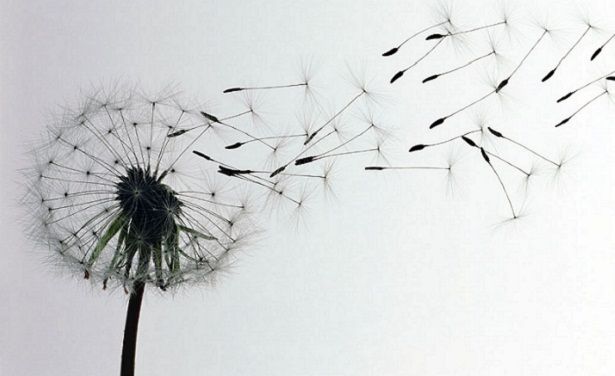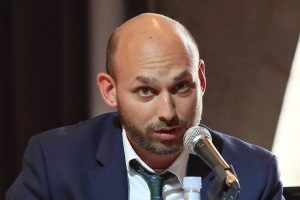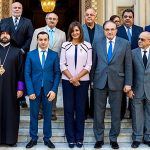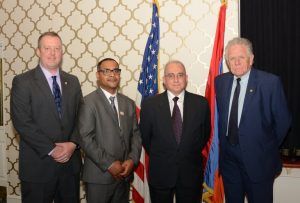Sevag Hagopian: “I saw peace and optimism within the children of Artsakh, even though they have lived in a war zone and heard the sounds of mines exploding”

Launched by the Ministry of Diaspora of the Republic of Armenia, the “What are YOU doing for Artsakh?” pan-Armenian movement became very popular and was approved by most of our compatriots. Many actions have been taken and are still being taken in the form of moral and material assistance. The initiators are groups, individuals, organizations and families from Armenia and the Diaspora. One of these initiatives was taken by the teachers of the Inclusive Education Department of the Holy Cross-Harboyan High School of the Armenian Catholic Church in Lebanon led by Editor of Zartonk Armenian Daily Sevag Hagopian, who gave an interview to Hayern Aysor.
Karine Avagyan: Mr. Hagopian, months ago, our editorial office hosted the director and two teachers of Primary School #2 after Vardan Minasyan in Martakert region of Artsakh where children are taught through inclusive education. At your invitation, they were preparing to visit Harboyan High School to exchange experiences and participate in a course. Months later, you are coming from that school in Martakert along with two teachers. Please, tell us what you got out of this visit? What was the mission?
Sevag Hagopian: This movement was launched upon the recommendation of the Minister during the 8th Pan-Armenian Forum of Journalists. It gave us something to think about, and we decided to collaborate with the Ministry of Diaspora of the Republic of Armenia and undertake the initiative to find an inclusive education school in Artsakh. We were lucky to contact the Vardan Minasyan Primary Inclusive Education School #2 of the borderline Martakert region and support them as much as we could with our advice and through exchange of experiences and listen to their proposals. We invited them to Beirut. The School’s Principal Melsida Kardumyan and her inclusive education teachers visited the Children with Special Difficulties Unit of Holy Cross-Harboyan High School where they were introduced to our teaching methods and the psychological activities that we carry out with the pupils. This time, we went to Artsakh where we were introduced to the teaching methods and delicacies. We interacted with the children and were introduced to the poor condition of their school…Each of the young female teachers of our group had prepared a material based on her profession. When we hosted a seminar with the support of the Ministry of Education and Science of Artsakh on ASunday, the girls gave their speeches to 30 different specialists of the school. I think the seminar was helpful. Our mission is not over. It has just begun and must continue.
Karine Avagyan: Is there a big difference between the teaching methods of your school and the teaching methods of the inclusive education school in Martakert?
Sevag Hagopian: I would prefer to have our psychologist Christine Der-Sarkisian talk about that. Der-Sarkisian specializes in the analysis of the behavior of children with special difficulties.
Karine Avagyan: Christine, what do you have to say about this?
Christine Der-Sarkisian: What is very important is where the children were born, on which land and in which environment they live. Of course, there are differences between the teaching methods in terms of approach. The subjects taught in the relevant unit of our school are more in number. There are few Lebanese-Armenians and few specialists who teach the given subject in Armenian, yet there are more specialists in Artsakh.
Karine Avagyan: Christine, what exemplary feature did you notice at the inclusive education unit of the school in Martakert that you can introduce in your school?
Christine Der-Sarkisian: There was a lot of love and warmth and unique generosity towards children with special difficulties. The unity of the teachers was exemplary. They worked like a family in solidarity and performed their tasks silently. Their peace also gave those children wings.
Karine Avagyan: Mr. Hagopian, what did the children of Artsakh get out of your visit?
Sevag Hagopian: First, I must say that those people have created jobs with nothing and have put their soul into it, providing those children with an education and giving them love with the belief that those children have the right to receive an adequate education and receive adequate treatment like everyone. Mrs. Hranush Hakobyan was very right when she said that even if the assistance is not tangible, those people will feel that they are not alone and that there are people who are interested in them. The children greeted us with bread and salt and recited poems. They were beautifully dressed and were in a festive mood. Those moments were very touching for us. It is amazing to see how they live, work and smile in that borderline settlement. They are so optimistic! Most importantly, they don’t leave their settlements. Living on the land and defending and protecting the borders is what real patriotism is all about!
Karine Avagyan: Christine, what is the difference between the children of Artsakh receiving inclusive education and the children receiving inclusive education at Harboyan School in terms of behavior and psychology?
Christine Der-Sarkisian: The children of Artsakh are more daring, simpler, straightforward, are satisfied with little and with whatever they have…
Karine Avagyan: Mr. Hagopian, what do you have to say about this?
Sevag Hagopian: I saw peace within them, even though they have lived in a war zone and heard the sounds of mines exploding. They have experienced difficult times, and the roads on which they walk to go to school are difficult. Our children aren’t that brave to walk to school on those roads. They would stay at home. Our children aren’t that brave and are more self-contained.
Karine Avagyan: Your group includes teachers of the Inclusive Education Unit of Harboyan School. Could you present their work?
Sevag Hagopian: Two of them are visiting Armenia for the first time and are very impressed with Armenia and Artsakh. I must say that they took this trip on their own. They had a great desire to help those children of Artsakh in some way.
Karine Avagyan: What are your future plans in relation to the Inclusive Education Department of School #2 in Martakert?
Sevag Hagopian: Our efforts and relations need to be ongoing. There is a need to repair the room at the school in Martakert where children receiving inclusive education study. We must try to furnish that room whenever possible.
Karine Avagyan: Mr. Hagopian, thank you and your patriotic and willing teachers, including Christine Der-Sarkisian, Natalie Avedian, Lara Goudouzian and Jennifer Avedian. I wish that all your plans with the Inclusive Education Unit of the school in Martakert are implemented and that your time and health of a busy intellectual help you fulfill your dreams and complete your programs in harmony.
Interview by Karine Avagyan




 Արևելահայերեն
Արևելահայերեն Արևմտահայերեն
Արևմտահայերեն Русский
Русский






